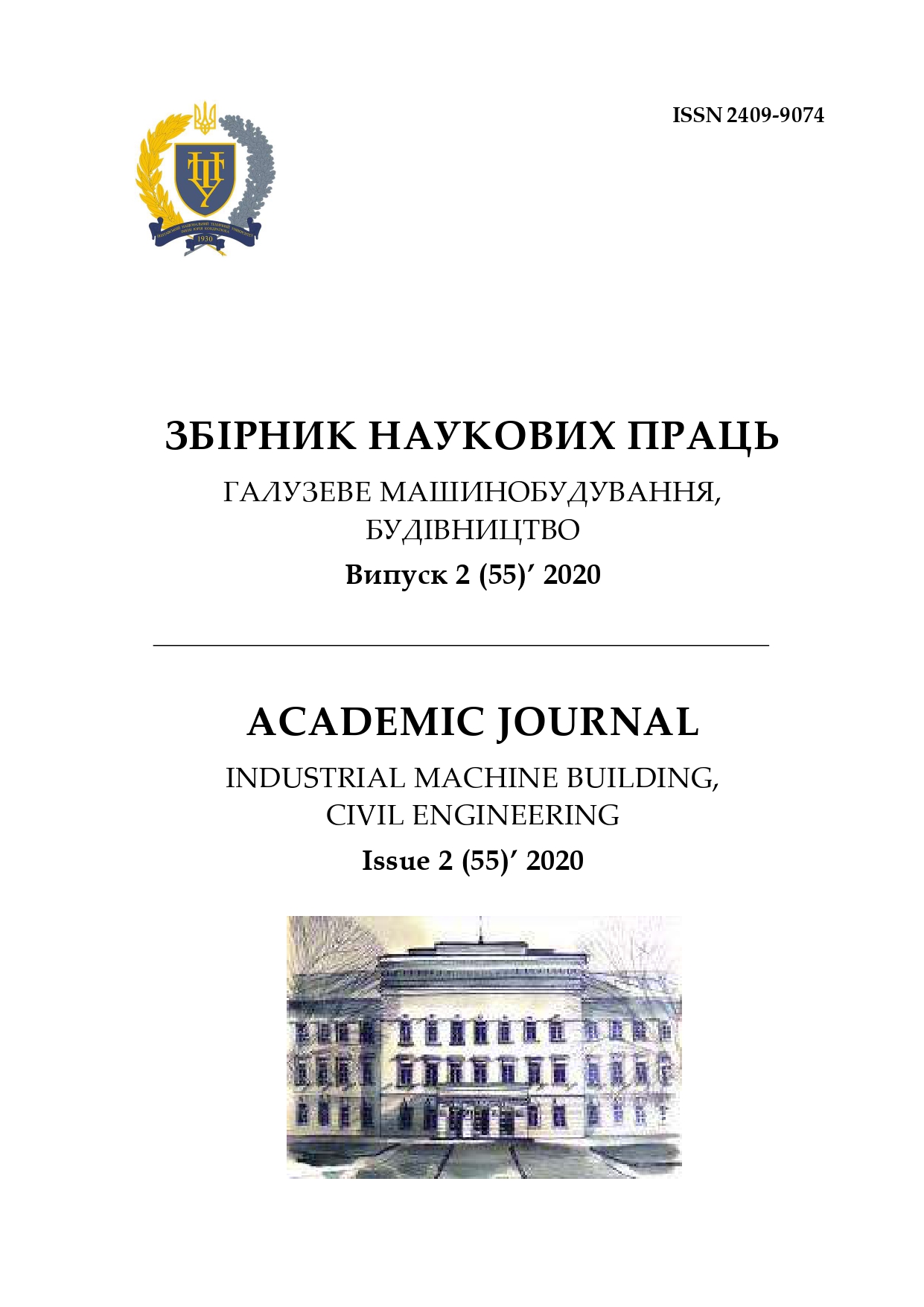Considering the availability of cold bridges in the design of thermal insulation shell of sandwich panels element-by-element assembly
DOI:
https://doi.org/10.26906/znp.2020.55.2351Keywords:
heat loss, insulation, linear heat transfer coefficients, temperature fieldAbstract
The work is devoted to the refinement of engineering methods for calculating heat loss through structures made of prefabricated sandwich panels. At buildings installation in places of steel structures adjunction "cold bridges" and, as a result, condensate and mildew are formed. Heat loss due to "cold bridges" can reach up to 50% of the total house heat loss and affect its energy efficiency class. The paper presents typical energy-efficient structural units of enclosing structures made of sandwich panels and the results of these nodes temperature field modelling, which allow by the DSTU ISO 10211: 2005 method to determine the linear heat transfer coefficients, which can be used in engineering calculations of relevant structures transfer resistance and supplement Annex G in DSTU B V.2.6-189: 2013. Calculation of the linear coefficient of thermal conductivity for different variants of structures adjacency will avoid thermal failures and increase the energy efficiency class of buildings
References
Farenyuk G., Filonenko O. & Datsenko V. (2018).
Research on Calculation Methods of Building Envelope Thermal Characteristics. International Journal of Engineering & Technology. 4.8, 97-102
http://dx.doi.org/10.14419/ijet.v7i4.8.27221 DOI: https://doi.org/10.14419/ijet.v7i4.8.27221
Yurin O.I. & Halinsʹka A.H. (2015). Defining the limits of RUUKKI sandwich panels application in the external walls of refrigerator buildings. Modern technologies and methods of calculation in construction, 3, 261-270
Chernyavsʹkyy V.V., Semko V.O., Yurin O.I. & Prokho¬renko D.A. (2011). Influence of perforation of light steel thin-walled profiles on thermophysical characteristics of enclosing structures. Academic journal. Industrial Machine Building, Civil Engineering, 1(29), 194-199
Leshchenko M., Semko O., Shumska L. & Filonenko O. (2018). Insulation of Building Envelope Complicated Node Points. International Journal of Engineering & Technology, 4.8, 190-195
http://dx.doi.org/10.14419/ijet.v7i4.8.27239 DOI: https://doi.org/10.14419/ijet.v7i4.8.27239
Sjoerd Nienhuys HA Technical Working Paper #2 – Calculation Examples of Thermal Insulation
https://www.researchgate.net/publication/232613788
Landerheinecke K., Gany P. & Satter E. (2003).
Thermodynamik für Ingenieuren. Vieveqes Fashbüsher der Technik
Dimoudi A., Androutsopoulos A. & Lykoudis S. (2006). Summer performance of a ventilated roof component. Energy and Buildings, 38, 610-617 DOI: https://doi.org/10.1016/j.enbuild.2005.09.006
Naji S., Celik O., Alengaram U.J. & Jumaat, Zamin. (2014). Structure, energy and cost efficiency evaluation of three different lightweight construction systems used in low-rise residential buildings. Energy and buildings, 84, 727-739. DOI: https://doi.org/10.1016/j.enbuild.2014.08.009
https://doi.org/10.1016/j.enbuild.2014.08.009 DOI: https://doi.org/10.1088/1475-7516/2014/08/009
Burch D. (1995). An analysis of moisture accumulation in the roof cavities of manufactured housing. Airflow Performance of Building Envelopes, Components, and Systems, ASTM STP 1255, American Society for Testing and Materials, Philadelphia, 156-177. DOI: https://doi.org/10.1520/STP14696S
Wentling J. (2017). Manufactured Housing. In: Designing a Place Called Home. Springer, Cham. DOI: https://doi.org/10.1007/978-3-319-47917-0
https://doi.org/10.1007/978-3-319-47917-0_9 DOI: https://doi.org/10.1007/978-3-319-47917-0_9
DSTU ISO 10211-1: 2005 (2007). Thermally conductive inclusions in building structures. Calculation of heat flows and surface temperatures. Part 1. General methods (ІSO 10211-1:1995, ІDT). (2007). Kyiv
DSTU ISO 10211-2 (2008). Thermally conductive inclusions in building structures. Calculation of heat flows and surface temperatures. Part 2. Linear thermally conductive inclusions (ІSO 10211-2:1995, ІDT). (2008). Kyiv
DSTU B V.2.6-189:2013 (2013). Methods of selecting insulation material for thermal insulation of buildings. Kyiv
DSTU B А.2.2-12:2015 (2015). Energy efficiency of buildings. Method of calculating energy consumption for heating, cooling, ventilation, lighting and hot water supply. (2015). Kyiv
Downloads
Published
How to Cite
Issue
Section
Published 2020-12-30




